Grandparents, neighbors and friends are propping up the child care industry. They need help
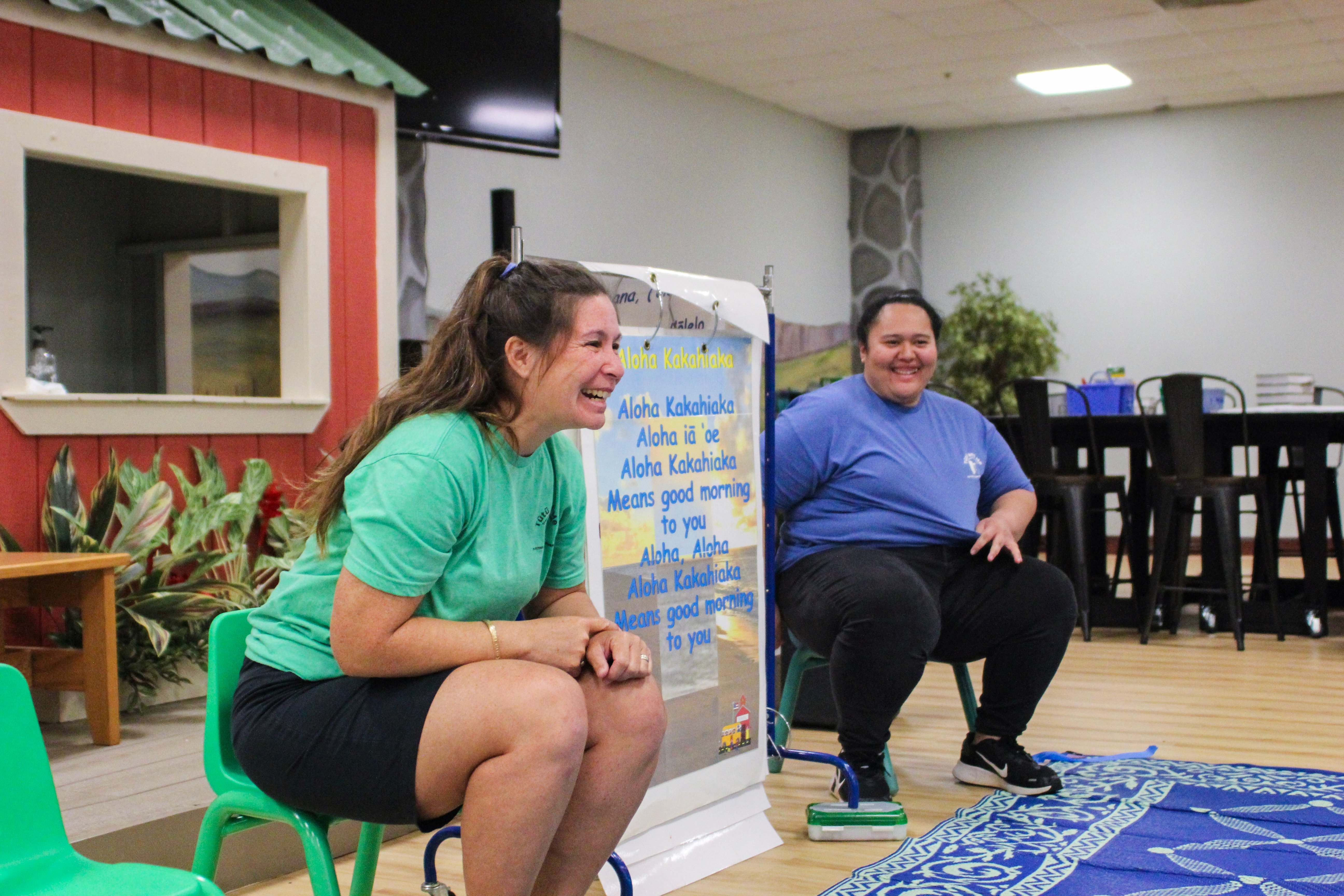
Jackie Mader/The Hechinger Report
Grandparents, neighbors and friends are propping up the child care industry. They need help
Two adults smile widely while sitting next to a sign with greetings written on it.
KANEOHE, Hawaii — In the basement of a church at the foothills of the Koʻolau mountains, Darrylnn Ferreira perched on a plastic chair at the edge of a large blue rug while her 4-year-old granddaughter, Talia, settled down for circle time. Three teachers welcomed other families as they trickled in and sat down, then launched into a morning greeting song in English and Hawaiian.
Ferreira followed suit, clapping along and singing, before settling back in her chair and paying close attention as a teacher held up a picture book about the Honolulu Zoo and started to read to the class.
As a grandmother, Ferreira is as much a member of the target audience for this free, traveling preschool program as Talia. Named Tūtū and Me after the Hawaiian word for “grandparent,” the program introduces children to early academic and social skills as well as native Hawaiian language and culture. At the same time, caregivers, many of whom are grandparents, learn about child development and how to navigate toddler tantrums, support early language and math skills and help children learn through play.
Every Tuesday and Thursday, Ferreira and Talia drive up a narrow, winding road, flanked with deep green foliage, to the hilltop church, about ten miles northeast of Honolulu. They amble down to a basement classroom that mimics a traditional school or center-based program, with multiple teachers for the dozen children, a structured routine and thoughtfully designed activity centers, each of which includes a poster for caregivers with instructions and tips to encourage exploration and learning. When circle time ends, Ferreira and Talia rotate through the centers to Talia’s favorite activities: drawing, painting and — on at least one day — riding a small tricycle in dizzying circles.
“This is amazing,” Ferreira said, motioning around the room as toddlers and preschoolers, trailed by their caregivers, dashed from one activity to the next. “We have this resource that gives this for us to learn.”
![]()
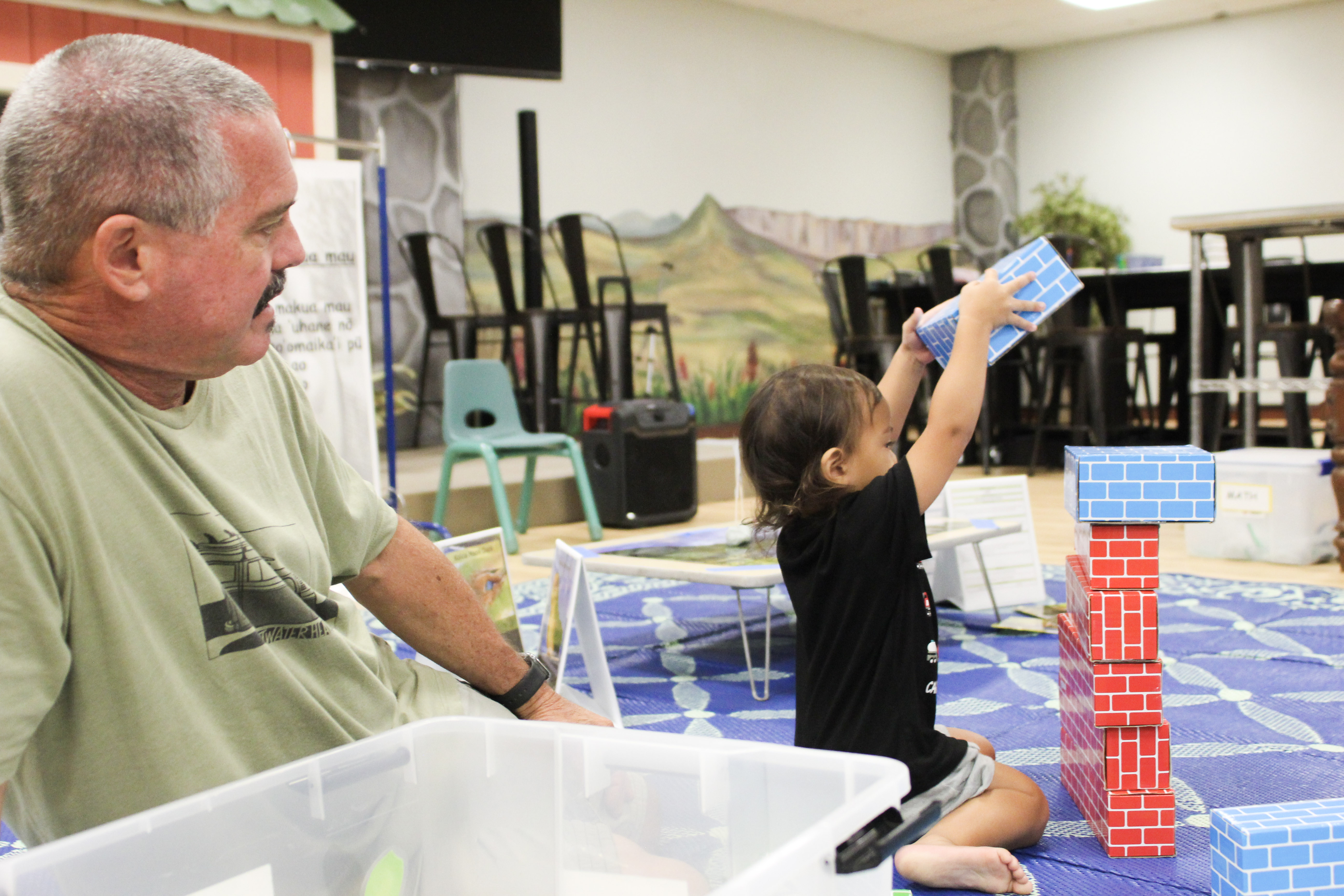
Jackie Mader/The Hechinger Report
Educating unlicensed caregivers
A man with gray hair and a mustache sits on the floor watching a child stack cardboard bricks on top of each other.
Tūtū and Me is one of several family-child interaction learning programs in Hawaii that offers support to the state’s large number of non-parental caregivers who provide child care each day. At least 43 percent of young children in Hawaii were watched by friends or relatives in 2019. The state has the highest percentage of families — 72 percent — that use federal funds to pay for unlicensed care, such as that provided by grandparents and friends.
The Hechinger Report finds that these caregivers — mostly women and largely invisible within the broader child care ecosystem — are often isolated in their homes and can’t always access the funding and training critical to offering the best care possible during a pivotal time of children’s brain development.
“What they learn in our program, what we’re trying to teach them, is that they are that child’s most important educator,” said Shawn Kanaʻiaupuni, president and CEO of the Hawaii-based Partners in Development Foundation, which runs Tūtū and Me. “Nobody is born knowing how to be a parent or caregiver, we all have to learn it.”
Ferreira, who brought another grandchild to a different Tūtū and Me location more than 15 years ago, has seen immense benefits for Talia. The preschooler is now more prepared for kindergarten, Ferreira said, and has learned aspects of Native Hawaiian culture that are meaningful to their family. Through the program, Ferreira has learned how to teach Talia how to form letters. “She won’t do that here,” Ferreira whispered, as Talia eyed some handwriting practice sheets before opening a drawing journal and coloring in a picture with a thick pink crayon. “But I’m doing it at home, just to reinforce it,” she added.

Jackie Mader/The Hechinger Report
Friend, family, and neighbor care
A woman smiles while watching several children interact.
At home, Ferreira infuses more counting into their day, as well as reading, English and Hawaiian songs, and creative activities, like painting and making homemade playdough. She and Talia have attended field trips and live theater, and Ferreira has enrolled Talia in gymnastics, a program she learned about through Tūtū and Me.
“We’re very fortunate this program is here,” she said.
For generations, families have relied on friends, family members and neighbors to help care for young children during the day. Friend, family and neighbor (FFN) care is the most common form of non-parental child care in America. Experts estimate at least 60 percent of children under age 6 spend their days in such arrangements with more than 4 million caregivers — mostly grandparents or aunts — a number that has grown over the past decade.
This type of care is especially common in low income communities, among families with limited English proficiency, in immigrant communities and for children with disabilities. During the pandemic, friend and family caregivers were a lifeline for many parents; recent data shows parents continue to desire and value it. Child care provided by relatives or other informal caregivers can offer valuable benefits for children, such as consistency of care, support of native language and culture, flexibility and affordability.
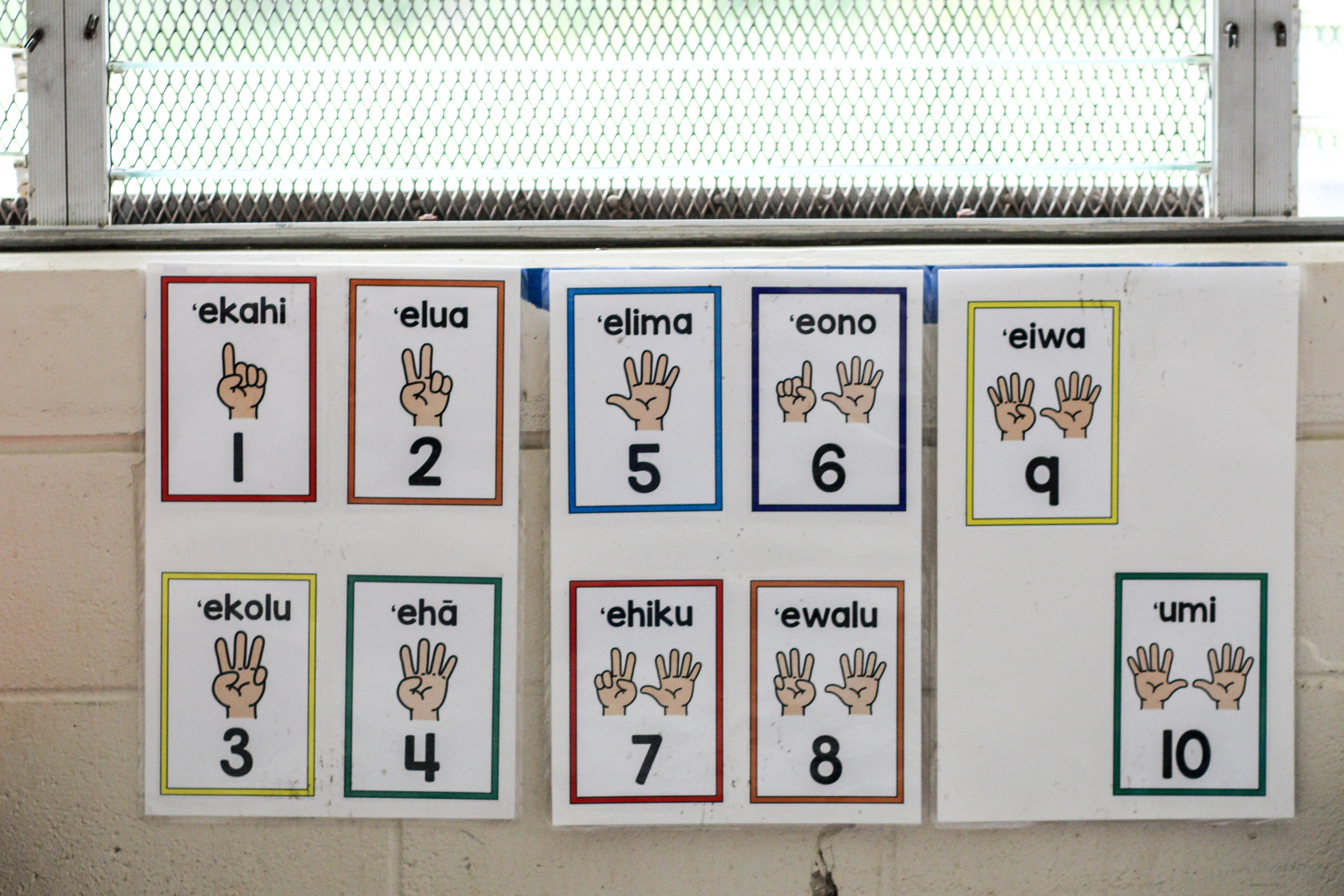
Jackie Mader/The Hechinger Report
Calling for more support
Laminated cards hung on a wall indicate the Hawaiian words for the numbers 1 through 10.
As states work to stabilize the child care industry in the wake of the pandemic, experts are calling for more support for all child care settings, including the informal, home-based care, where so many children spend their days.
“The individuals that provide FFN care are doing a huge service to young children and their families, and they’re also doing a considerable service to the community and the economy,” said Natalie Renew, executive director of Home Grown, a nonprofit aimed at increasing the access to and quality of home-based child care. “Our high-priority children and families are often in this setting, and if we really want them to be ready for kindergarten and able to thrive, we really need to care for them in this setting with these caregivers,” she added.
In Hawaii, friend, family and neighbor care is valued both culturally and by necessity. Extremely high real estate costs coupled with a high cost of living means several generations of families often live together. While many working families choose and prefer ‘ohana, or family, care, while their children are young, other options are scarce. Before the pandemic, the state had only enough licensed infant-toddler center spots for one out of every 37 children under age 3. The state lost 12 percent of its child care spots during the pandemic. In some parts of Hawaii, including the islands of Kauai, Molokai and Lanai, there are no child care centers serving infants and toddlers. The average cost of center-based infant child care, when it is available in Hawaii, is more than $1,700 a month, several hundred more than the national average.
Nationwide, aid for family and friend caregivers is rare. In 23 states, there are no known statewide supports for relatives and friends who provide child care. Many of these providers don’t view themselves as educators, but rather as caregivers who are simply helping their families. Few attend educational workshops or get help from a home visitor or coach. During the pandemic, when family members and friends were a critical caregiving lifeline, only 13 states used federal stabilization funding to invest in these providers.
Policymakers have mixed views on whether grandparents, neighbors, and family friends should be included in formal child care policy, said Patricia Lozano, executive director of Early Edge California, which advocates for high-quality early learning programs in a variety of settings. “It’s complicated,” she said. “It’s really difficult to have policies that apply to all.”
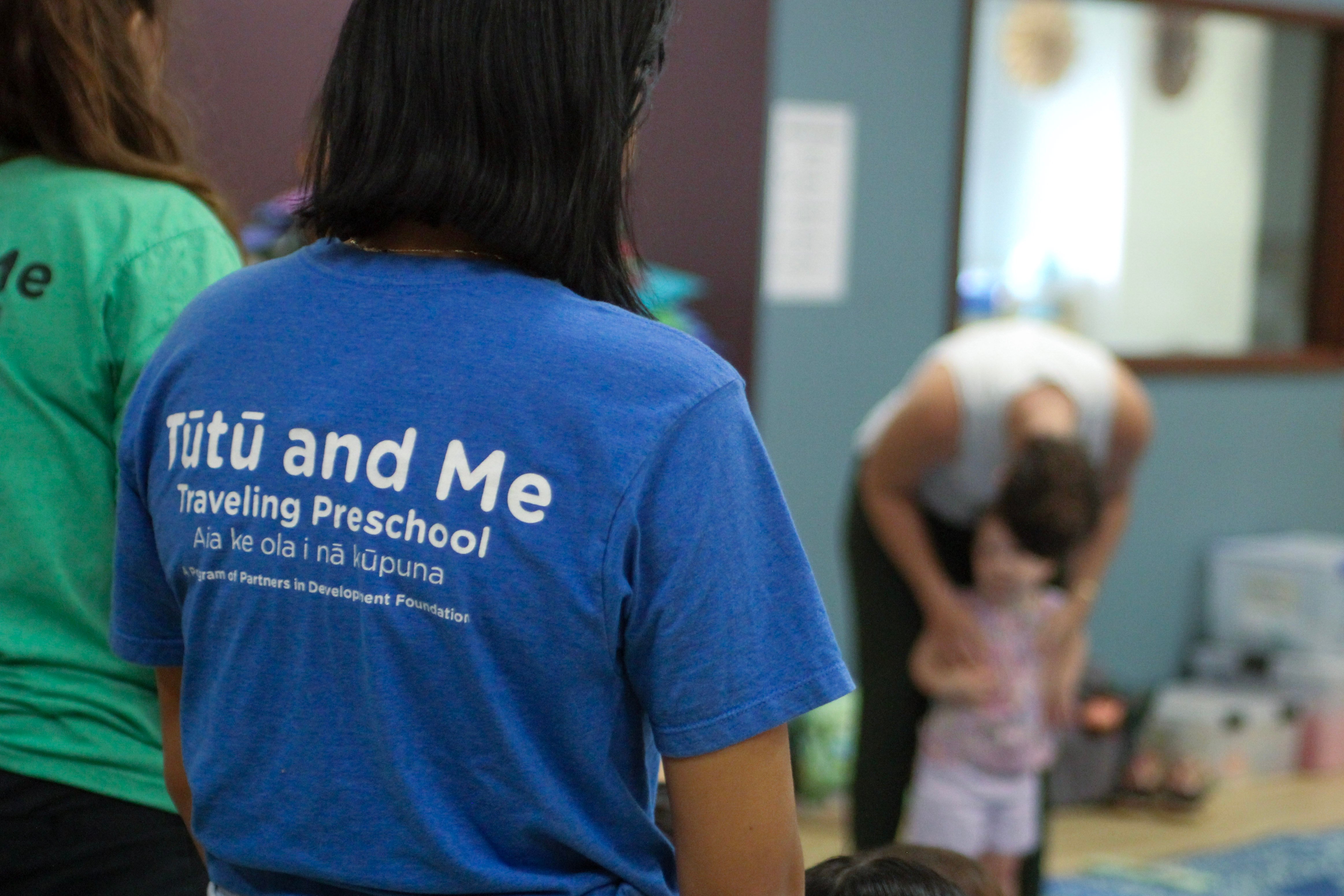
Jackie Mader/The Hechinger Report
States supporting family and friend caregivers
A person with a Tūtū and Me T-shirt looks at an adult interacting with a child.
But a few states, such as Alabama and California, do offer formal training specifically for this population. In California, where one in five FFN caregivers watch four or more children, the state runs play groups and training for caregivers through a child care agency. Other states offer programs like those in Hawaii: play groups for caregivers and children, featuring key aspects of formal preschool programs, as well as educational materials through the mail.
Several states, including Colorado and Massachusetts, have expanded home visitation programs to serve relatives and friends who care for children. This model is especially promising, helping ensure that informal caregivers don’t feel they’re being pushed into the regulations and oversight involved in formal child care, said Linda Smith, director of the early childhood development initiative at the Bipartisan Policy Center.
“There’s this constant debate … ‘If I’m the grandparent, do I want somebody coming in and telling me how to care for my grandchildren?'” she said. “The other side of that coin is, ‘Hey, I haven’t been around little kids in a long time. What do I need to know now, that I didn’t know before?'” she added. “How do you support grandparents in this whole role, without regulating them and telling them what to do?”
Despite the benefits these caregivers offer, there are also challenges.
Children in informal care settings may have fewer resources than their peers in formal, licensed child care programs, spend more time watching television and have lower cognitive and school readiness scores. Research has found some caregivers are less likely to play with children and engage in the back-and-forth conversation known to stimulate cognitive development. In some states, caregivers can care for up to six children without a license, mirroring more formal home care settings, but without the support provided to licensed programs.
Without access to information or training, caregivers may rely on their own child-rearing experiences, which, for some, could be limited.
The essential components of “identity and love and affection and reciprocity,” are already baked in to care provided by family friends and relatives, said Renew from Home Grown. “And with more resources, I think we could do so much more to intervene on the cognitive pieces of the development.”
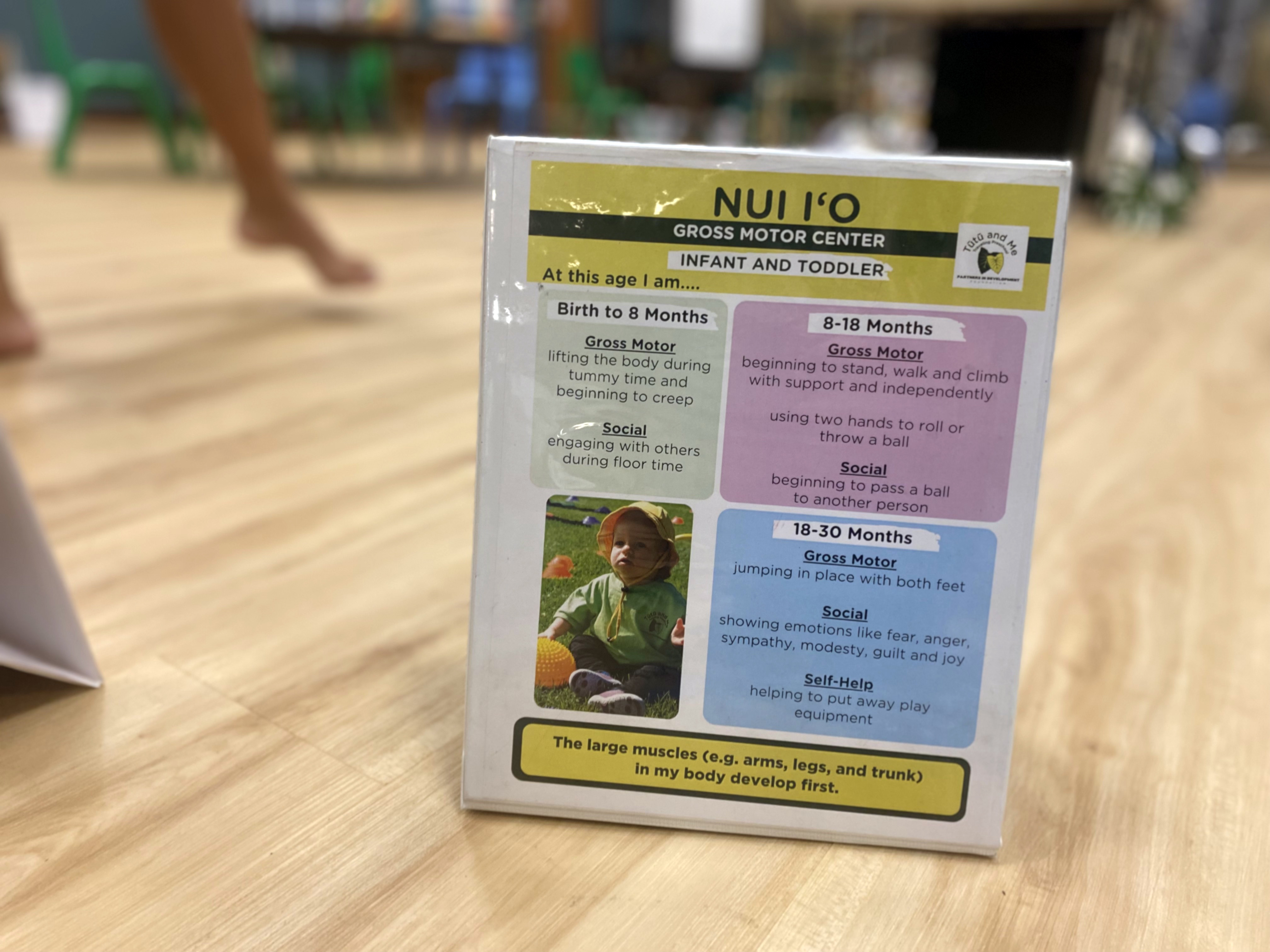
Jackie Mader/The Hechinger Report
Looking for tips to handle caregiving challenges
A sign describes various ages and developmental milestones for young children.
Caregivers nationwide largely report that they’d welcome help and information, especially on health and safety, how to offer nutritious meals and navigate state systems, as well as how to use materials to support play and learning.
And some caregivers simply need immediate tips on how to handle challenges with the children they watch each day.
On a recent Wednesday morning in Kapolei, Hawaii, caregivers followed children inside two brown yurts sitting in tall grass on the grounds of two homeless shelters. Although this program, the Ka Paʻalana Homeless Family Education Program at Hope Shelter, is aimed at families experiencing homelessness, many local families drive to the homeless shelter to take advantage of the free early learning opportunity. Ka Paʻalana’s shelter-based location is of such high quality, it is accredited by the National Association for the Education of Young Children.
Like their counterparts at Tūtū and Me, the teachers with Ka Paʻalana, which runs the shelter location and several traveling sites, see themselves as guides for caregivers of young children. For a portion of the class at Hope Shelter, teachers mind the children while caregivers receive instruction on topics like child development and career and life skills.
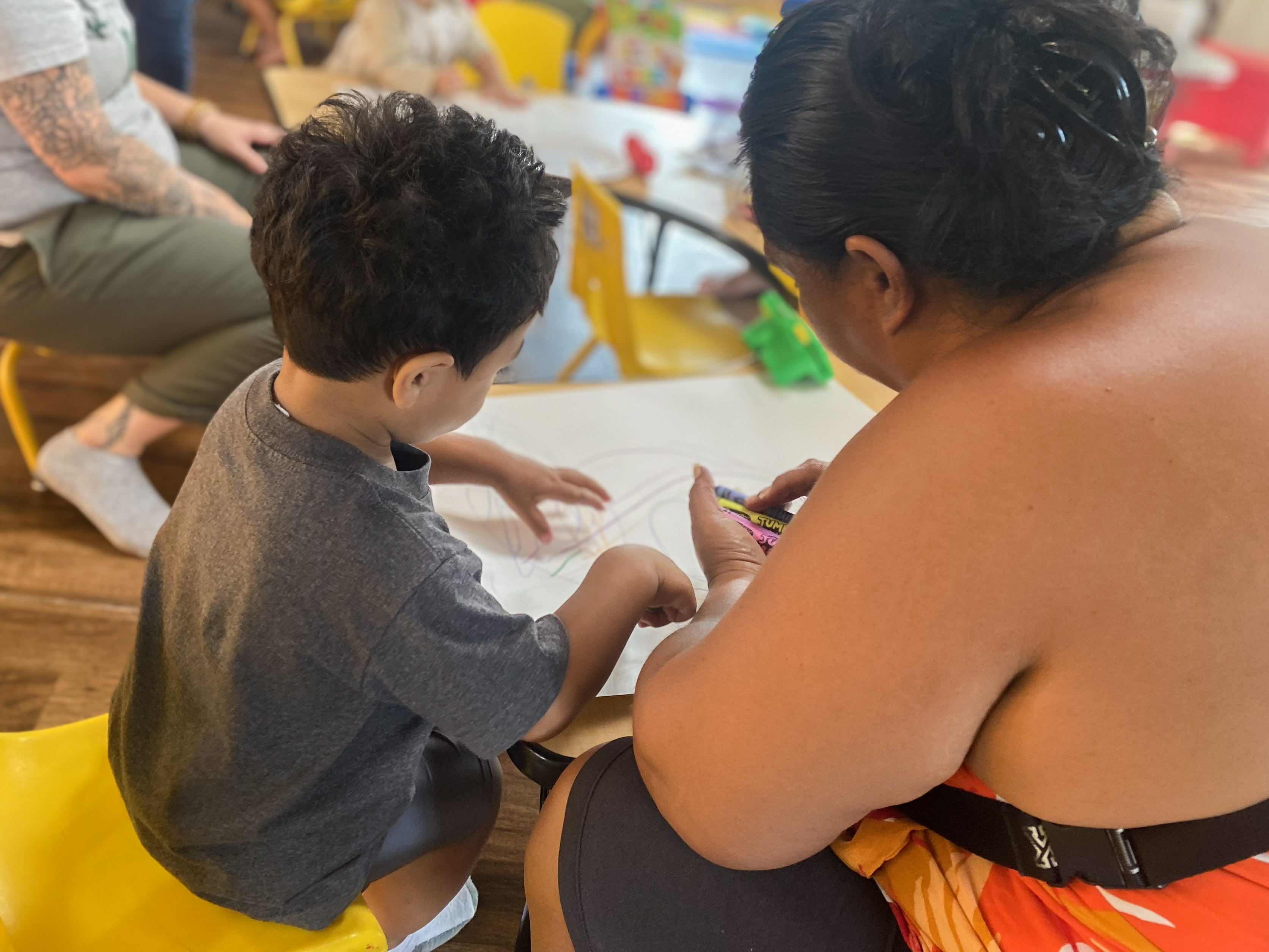
Jackie Mader/The Hechinger Report
Benefits for children and caregivers
A woman sits with a child while they draw on paper.
Inside one of the yurts, Cece Kailiwai trailed a boisterous 1-year-old, who recently has been experimenting with climbing, pushing and was experiencing big feelings. Kailiwai, whose own children are grown, lives at one of the shelters and watches the toddler, who also lives in the shelter, as a favor for the child’s parents while they work. She chatted with teachers and watched their interactions with the boy when a tower of blocks fell over and he erupted in tears, kicking at some of the blocks.
Kailiwai said the program benefits them both. Without it, the toddler would miss out on socialization with other children and the stimulation of educational activities and toys. Kailiwai would be on her own to learn how to manage tantrums and behavior, how to play in ways that support his development and make sure he is on track with age-appropriate skills.
The program has impacted her as a caregiver. “For me, it’s learning patience and structure … and learning that when you’re consistent, things will flow,” she said.
A growing body of research shows support programs for informal caregivers can make a positive difference, increasing caregiver knowledge of child development and decreasing caregiver depression and isolation.
There are also long-term benefits for children. In Hawaii, a study of a small group of Tūtū and Me graduates found 86 percent were proficient in reading and math by third grade, nearly 20 percentage points higher than the statewide average. Ninety-eight percent of children leaving Tūtū and Me met school readiness standards on state tests, and Native Hawaiian graduates of the program were generally performing at the same levels as their non-Native Hawaiian peers, closing a persistent gap among children in the state.
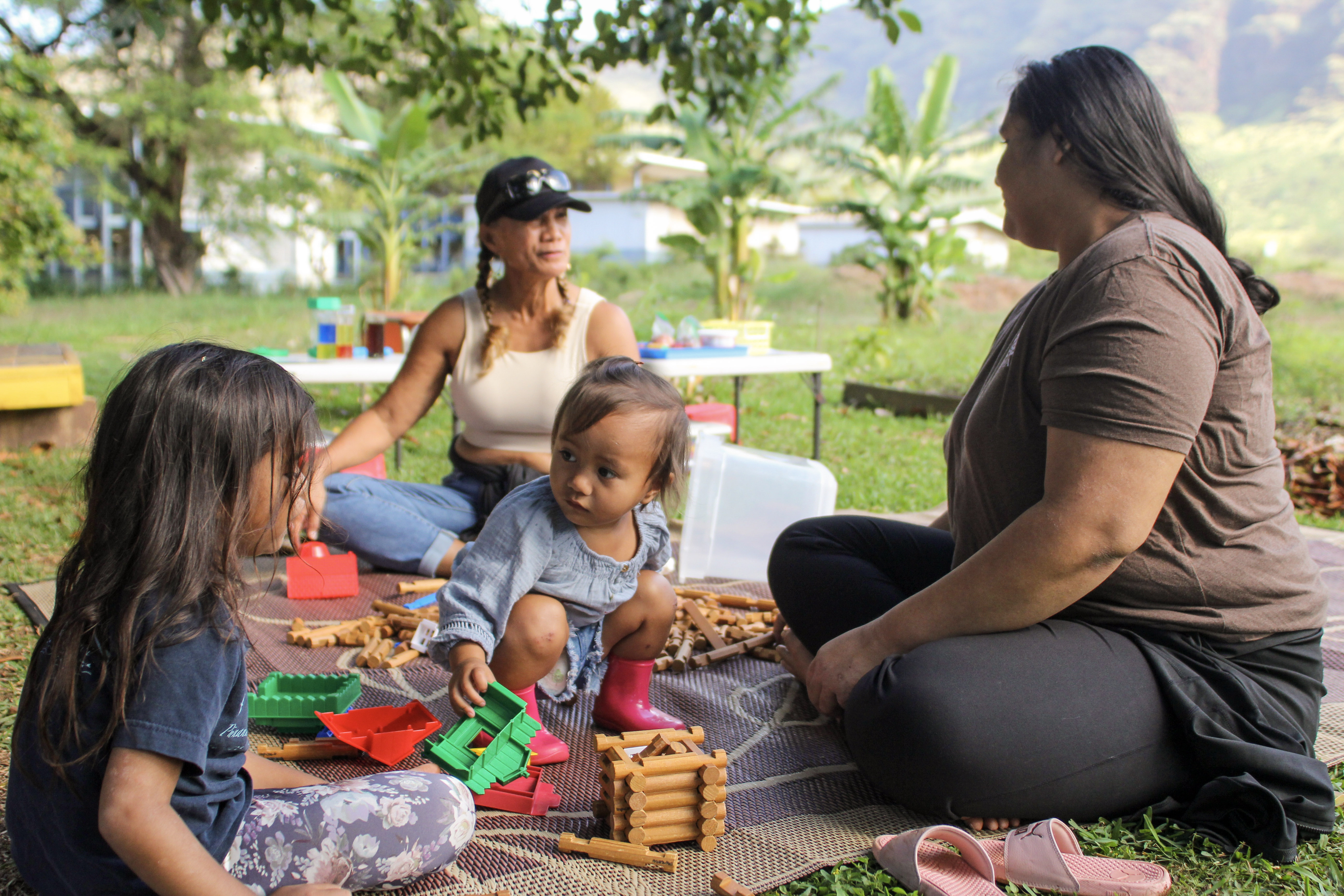
Jackie Mader/The Hechinger Report
Promising results, but proper funding is lacking
An adult sits with a child on a blanket spread on the grass outside, with a view of a hillside.
A longitudinal study of Keiki Steps, a family-child interaction program in the state similar to Tūtū and Me, found similar positive results: A survey of 80 percent of the first seven cohorts of Keiki Steps graduates found they all graduated from high school on time and 75 percent were college bound. These results are particularly stunning in a state where the Native Hawaiian population faces “generational effects of colonization,” said Maile Keli’ipio-Acoba, CEO of the Institute for Native Pacific Education and Culture, or INPEACE, which runs Keiki Steps.
Despite the promise and success of these programs, the state provides little funding for these efforts. Tūtū and Me and Keiki Steps get most of their funding from the federal government, an amount set aside for Native Hawaiian Education programs, as well as from foundations and other private donors. The state’s Executive Office on Early Learning funnels some $300,000 into two other family-child interaction programs, held at two elementary schools.
FFN support programs also receive some funding from the state’s Department of Human Services, which invests about $188,000 toward these programs. The bulk of this investment is steered toward Learning to Grow, an outreach program for FFN caregivers and home-based providers, run by the University of Hawaii at Manoa and Windward Community College. Every month, caregivers across the Hawaiian Islands who are registered with the state can receive packets of educational materials centered around a theme, like learning through play and early brain development.
Hawaii has been largely focused on expanding pre-K for 3-year-olds and constructing pre-K facilities — investing $200 million last year toward efforts to do so. This approach ignores the family-and-friend settings that advocates say many parents choose and, in many cases, prefer.
“Our native Hawaiian population really continues to hold a cultural value of their child being raised at home with their families,” said Keli’ipio-Acoba, instead of in an “institutional, educational kind of setting” for young children.
More funding could help expand the reach of programs for informal caregivers, advocates say. But in the meantime, the caregivers who have access to this support say it’s made a difference.
Four days a week, teachers from Keiki Steps fan out across the islands to set up makeshift classrooms in nine communities. On a recent morning in northwest Oahu in the town of Waianae, on a farm tucked away on the edge of the Makaha Valley, a half-dozen families roamed around activity centers under a lush canopy of macadamia nut, jackfruit and ‘ulu trees.
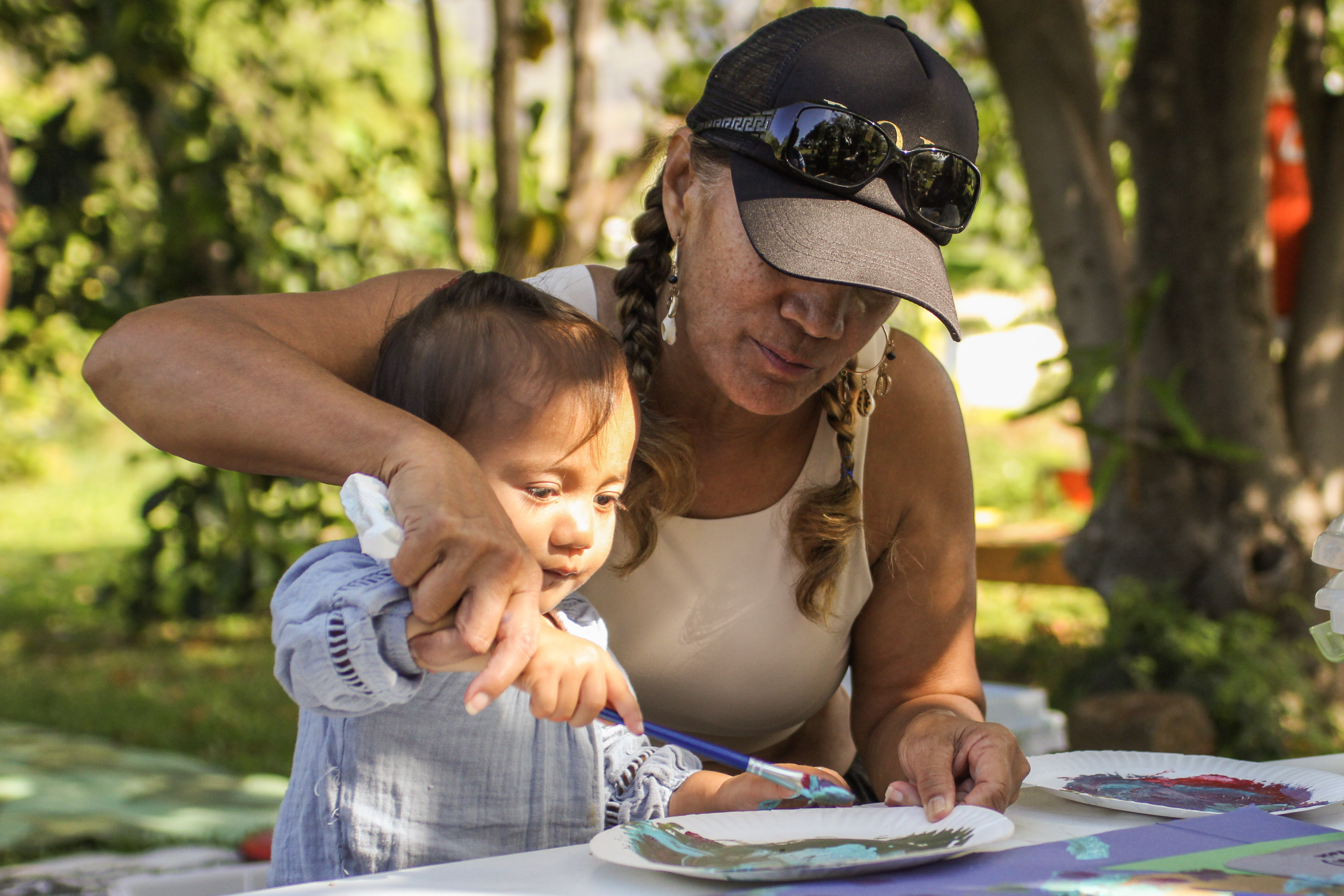
Jackie Mader/The Hechinger Report
Making a big difference
A person wearing a hat guides a child’s hand holding a paintbrush over a piece of paper on a table.
On the edge of the large, outdoor classroom, Dee Kila crouched down next to her 2-year-old granddaughter, Hi’iaka, at a painting station.
“Can you say blue?” she asked as Hi’iaka picked up a paintbrush and smeared turquoise paint on a piece of cardboard depicting Hawaiian goddess Pele’s journey home.
“Dab, dab, dab,” Kila said as her granddaughter dipped her paintbrush in more paint. Kila gently put her hand over Hi’iaka’s hand and moved it back and forth, showing her how to create long strokes that resembled waves.
“Nice job, high five!” she said, high fiving the toddler.
Kila watches Hi’iaka and her 1-year-old brother five days a week, from 7 a.m. to 4:30 p.m., for free. “It’s very exhausting,” Kila said. “I am underpaid,” she added, laughing. Kila said her grandchildren are benefiting from the activities, songs and books at Keiki Steps. But the program has helped her, too. In addition to her grandchildren, Kila also cares for her 81-year-old mother, a combination Kila said can be overwhelming.
The biggest change she’s noticed since she started coming to Keiki Steps is in herself. Having a place to bring the children to learn and socialize with others, where she can also learn about child development and interact with other caregivers, has been helpful, Kila said, especially since no such programs existed in her community when she was a young mom learning how to be a caregiver.
“It’s made me more calm, and taught me how to be more patient,” she said. “Now that I’m caregiving, I’m like, I gotta go to Keiki Steps, so I can learn.”
This story was produced by The Hechinger Report and reviewed and distributed by Stacker Media.
